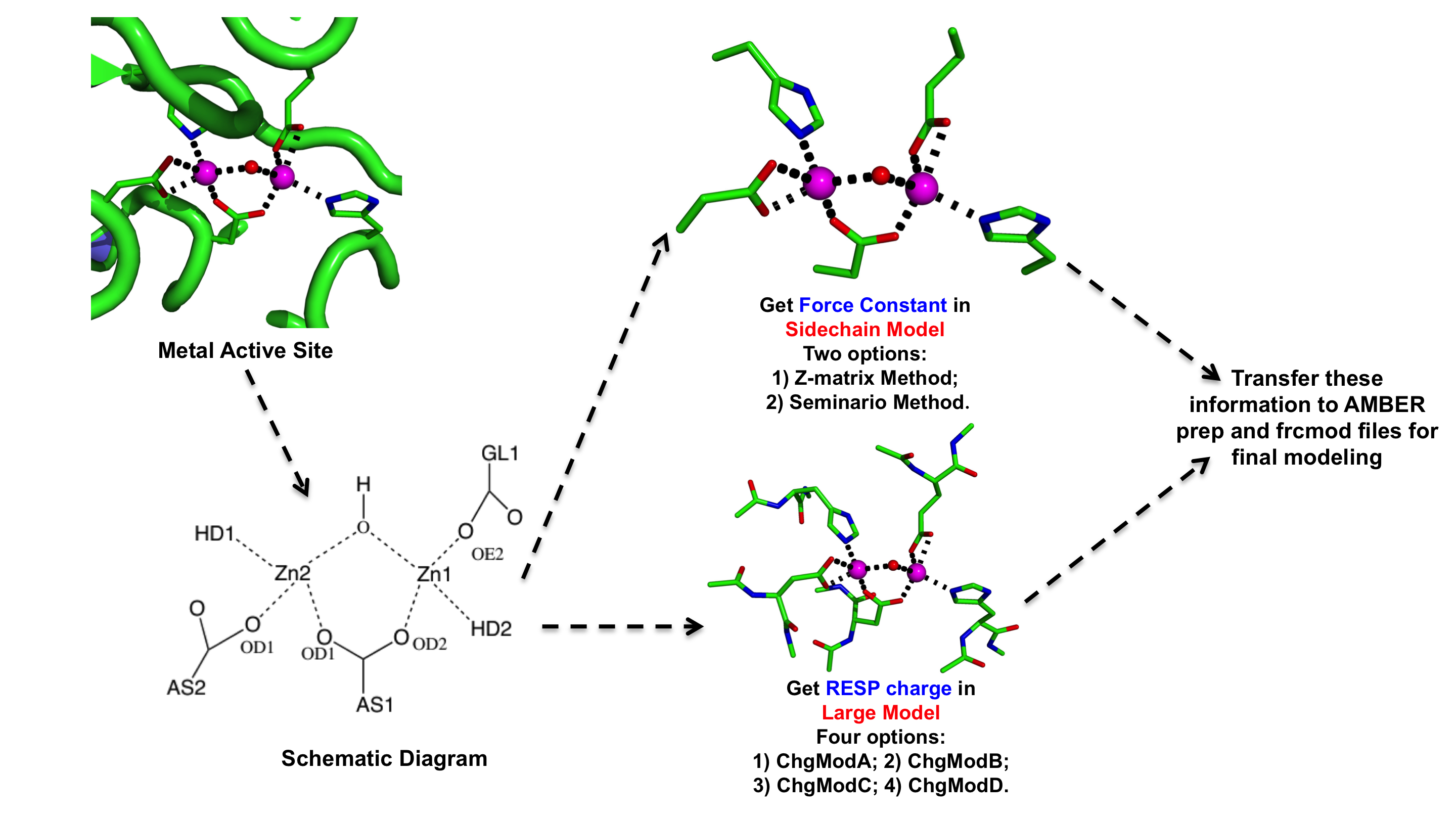
Copyright (C) Pengfei Li & Kenneth M. Merz Jr. 2015
金属サイトパラメータ化のための一般的なワークフローは、MCPB&MCPB.pyを用いて次図のように要約することができます。:

通常、パラメータ化プロセスは2つの部分で構成される。:
1)接合部(結合と角度)のパラメータを取得するが、MCPBは金属-配位子のねじれ障壁がkTを下回っているためパラメータ化プロセスにおいて二面角部分を無視する。
2) 2)ポテンシャルの静電部分に対する点電荷パラメータを取得する。
パラメータ化の速度と精度のバランスをとるために、プロセスの2つの部分は、異なる金属酵素活性部位のモデルに基づいている。:
1)最初の部分は側鎖モデルに基づいており、結合残基の側鎖はメチル基で終わっていると考えている。このステップでは、ユーザは2つのオプションを選択できる。:
Z-matrix method The bond and angle force constants are determined from the Cartesian Hessian matrix Seminario Method The bond and angle force constants are determined from the sub matrices of the Cartesian Hessian matrix Empirical Method (Only in MCPB.py) The bond and angle force constants are determined from an empirical method developed by Li et al. in Merz Research Group, current version only supports bonded model of Zinc ion 2) 第二ステップは大規模なモデルに基づいており、側鎖とおよびそれらのACE(N-terminal acetyl)とNME(C-terminal N-Me amide)終端をもつバックボーンが含まれている。このステップでは、ユーザーは4つのオプションを選択する。:
ChgModA Allow the charges of the all the atoms of the ligating residue to change ChgModB Restrains the charges of the backbone heavy atoms (CA, N, C, O) to the values in AMBER FF94 ChgModC Restrains the charges of all the backbone atoms (CA, H, HA, N, HN, C, O) to the values in AMBER FF94 ChgModD Restrains the charges of not only all the backbone atoms but also the sidechain CB atom to the values found in AMBER FF94
SEMINARIO / ChgModBの組み合わせが最良の結果を与え、さらにSEMINARIO / ChgModDはオリジナルの論文の試験で有望な性能を示したが、それはバックボーン原子のポイント電荷がtorisonパラメータフィッティングで影響力をもっていることと一致している。 [1]
References:
[1] Martin B. Peters, Yue Yang, Bing Wang, László Füsti-Molnár, Michael N. Weaver, and Kenneth M. Merz, Jr. "Structural Survey of Zinc-Containing Proteins and Development of the Zinc AMBER Force Field (ZAFF)", J. Chem. Theory Comput., 2010, 6, pp. 2935-2947